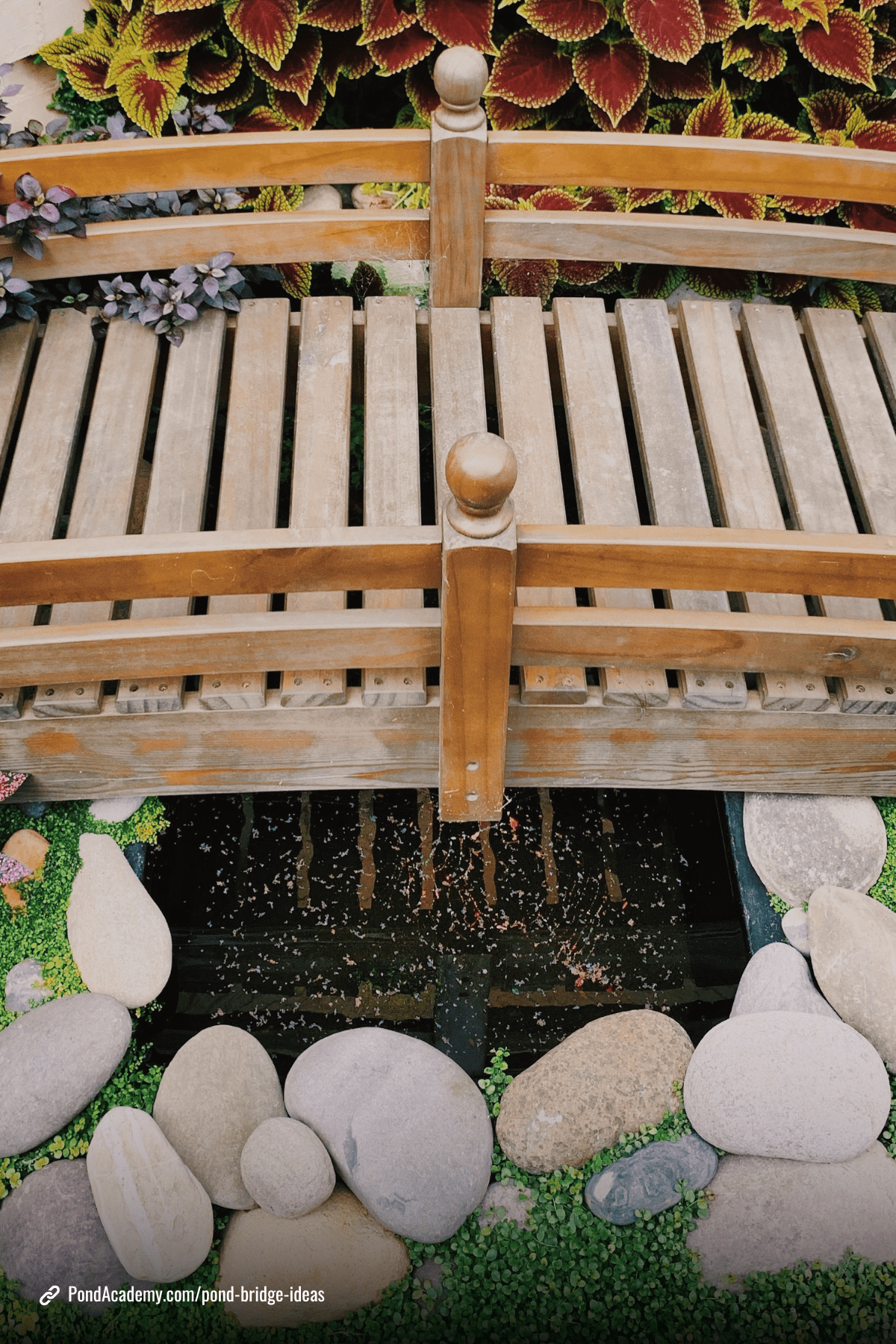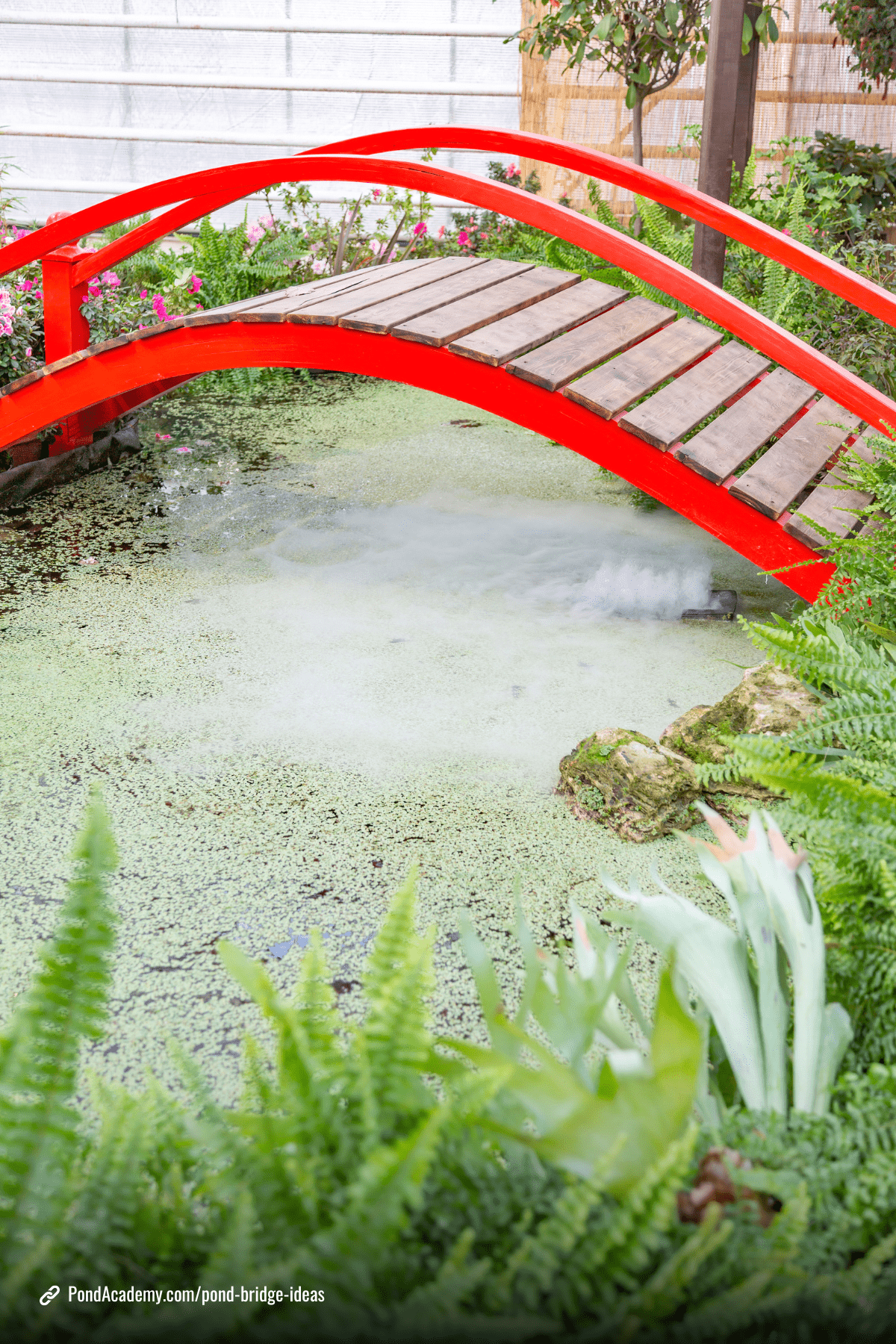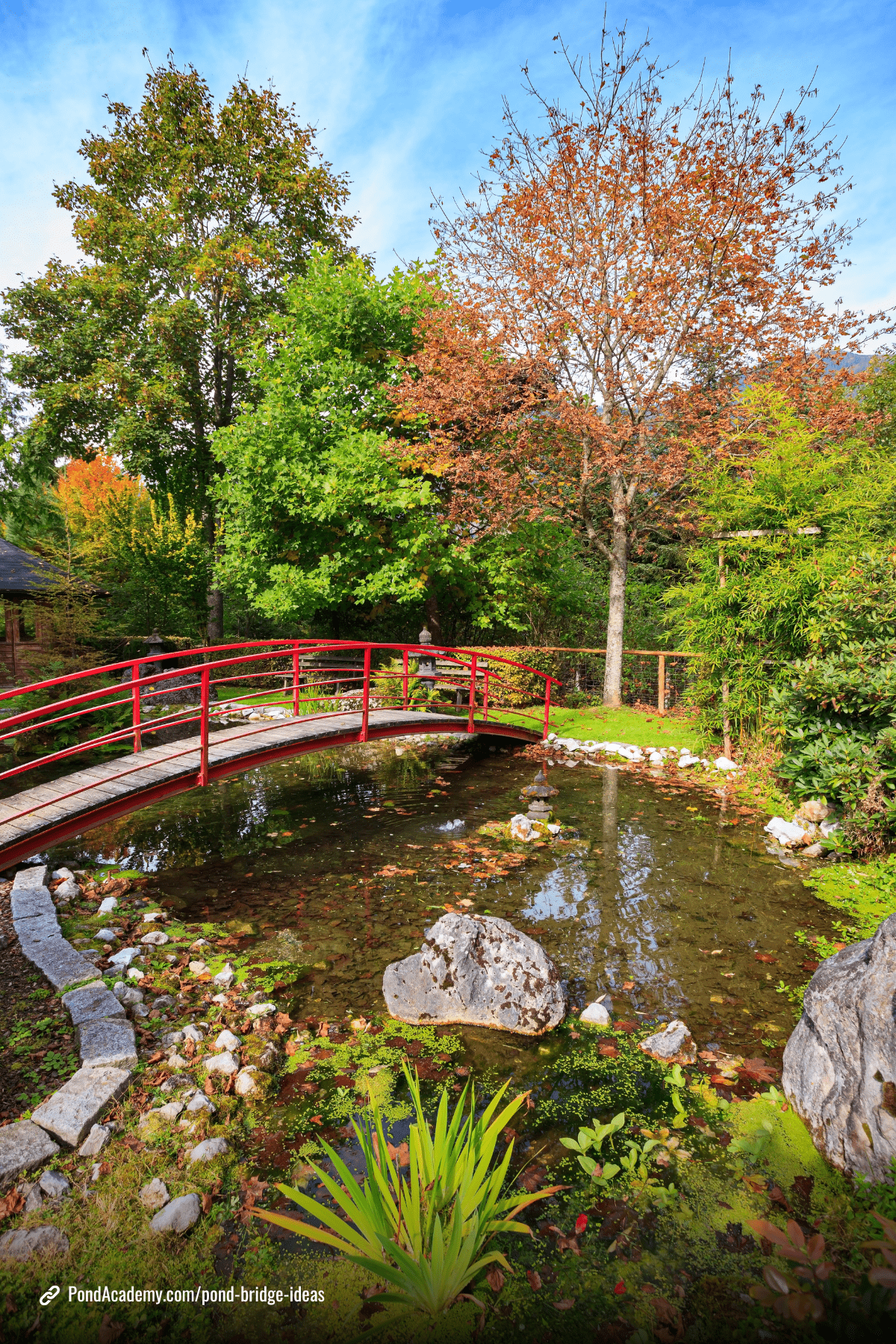22 Inspiring Pond Ideas with Bridges to Enhance Your Outdoor Space
Pond Academy is reader-supported. Buying through links on our site may earn us an affiliate commission. As an Amazon Associate I earn from qualifying purchases.
Pond bridges are one of my favorite features for enhancing the beauty and functionality of a backyard pond.
They add a unique charm and elegance to your pond that requires little to no maintenance.
Below, I share 22 inspiring pond bridge ideas and tips for building your own!
Pond Bridge Ideas
Get Our Best Pond Tips Sent to Your Inbox for Free!
Join thousands of others and learn from our decades of pond building and maintenance experience! Your pond will thank you!
By subscribing you agree to receive emails from PondAcademy.com. We will always respect your privacy and you can unsubscribe at any time.
Wait! Before You Add a Bridge to Your Pond...
Adding a bridge to a backyard pond is an exciting project that will surely improve its aesthetic and functionality. But before you start construction, let's cover a few build tips that can make the process go a whole lot smoother.
1. Choose the Right Location
Consider Accessibility
Place the bridge where it provides easy access across the pond. Think about the natural flow of your garden and how you move through it.
Aesthetics Matter
Position the bridge in a spot that enhances the visual appeal of your pond. It should integrate seamlessly with the overall design of your garden.
2. Select the Right Materials
Wood, Metal, or Stone?
Wood is a popular choice for its natural look, but it requires maintenance. Metal bridges are durable and often have intricate designs. Stone bridges offer a timeless, sturdy option but can be more challenging to install.
Weather Resistance
Choose materials that can withstand your local weather conditions. For instance, treated wood or rust-resistant metals can last longer in various climates.
3. Design and Safety
- Obtain Necessary Permits: Depending on your local regulations, you may need to obtain permits before constructing a bridge over a body of water, even if it's on your own property.
- Appropriate Size: If the bridge will serve a purpose other than just for looks, ensure the bridge is wide enough for safe passage. A width of at least 2-3 feet is generally recommended.
- Handrails for Safety: Handrails can add safety, especially on longer or higher bridges. They are particularly useful if children and elderly family members frequently use the bridge. And they may even be required, so check local building codes.
- Consider Load-Bearing Capacity: Determine the maximum load the bridge needs to support if you intend to use it for more than just looks.
4. Bridge Kit or DIY
Pre-Made Kits
Using a pre-made bridge kit can simplify the process. These kits come with all the necessary materials and instructions, making them ideal for those with limited time or DIY experience. They often include pre-cut pieces that fit together easily, reducing the chances of errors during assembly.
![]() Tip
Tip
Amazon.com sells pond bridge kits, many of which are under $100! It's difficult to even get lumber from a local yard for under that price, let alone pre-cut with install hardware and instructions!
Building from Scratch
For those who enjoy a hands-on project, building a bridge from scratch offers flexibility in design and materials. This approach allows you to customize the bridge to perfectly fit your pond and garden aesthetic. While it can be more time-consuming and requires basic carpentry skills, it can be highly rewarding.
5. Installation Tips
Solid Foundations
Install your bridge on stable ground. Use concrete footings or secure posts to prevent shifting and wobbling.
Level and Secure
Ensure the bridge is level and securely anchored. This prevents tilting and makes crossing safer and more comfortable.
![]() Tip
Tip
If you are unsure about any aspect of the installation process or if the bridge design is particularly complex, consider hiring a professional contractor or engineer to oversee or assist with the installation.
6. Maintenance
Regular Inspections
Check your bridge periodically for signs of wear and tear. Look for loose boards, rust, or cracks, and address these issues promptly.
Cleaning and Treatment
Keep your bridge clean and treat it as needed. Wood bridges may need staining or sealing, while metal bridges might require rust-proofing.


























